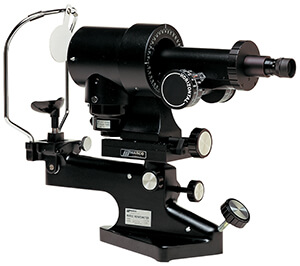Keratometry

Keratometry is the measurement of the corneal curvature; corneal curvature determines the power of the cornea. Differences in power across the cornea (opposite meridians) results in astigmatism; therefore, keratometry measures astigmatism. It can be acquired with a variety of instruments either manually or via automated methods.
Keratometer or ophthalmometer is commonly used to identify conditions such as,

